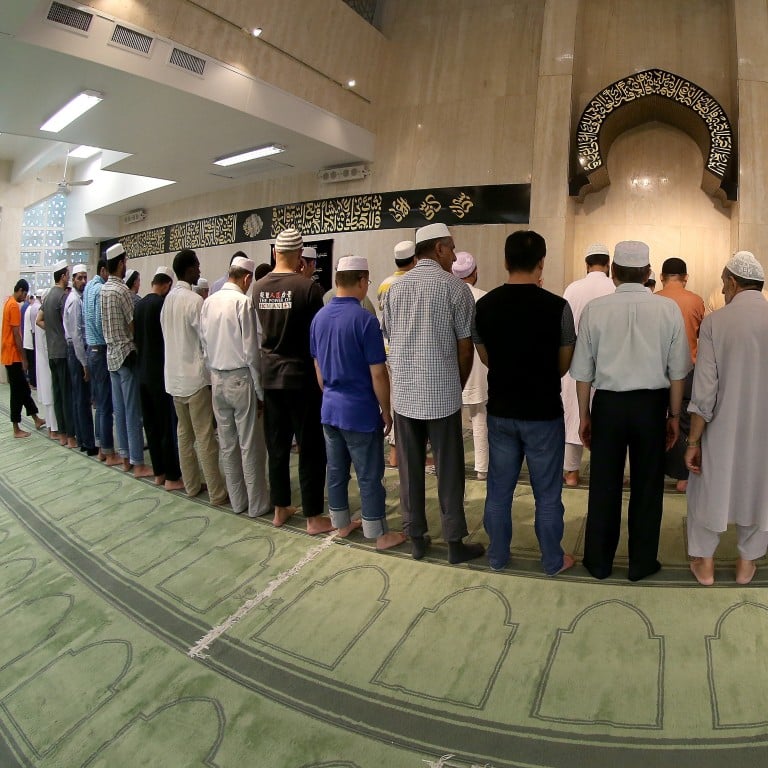
Islam for non-Muslims – Chinese imam in Hong Kong on a mission to explain his religion and its history in the city
- Muslims have been in Hong Kong since the 1840s, and in recent years their numbers have grown. Imam Uthman Yang felt moved to explain the religion to Hong Kong
- The result is a book in Chinese, Understanding Islam. Yang says what sets Islam apart from other religions is the fact it touches all parts of a believer’s life
Tucked away in a quiet backstreet on Hong Kong Island, the Masjid Ammar and Osman Ramju Sadick Islamic Centre is a world apart from the strip of bars not far away in Wan Chai district.
On one side is a tall white tower with a pastel green spire, reminiscent of a minaret. At the entrance an attendant checks the temperature of everyone walking in, because of the coronavirus pandemic.
In the foyer, imam Uthman Yang Xing Ben greets worshippers – mostly men and teenagers – in Arabic as they enter before 5pm prayers.
Visitors can’t help but admire the large and elaborate mosaic on the wall depicting Saudi Arabia’s Great Mosque of Mecca. In the middle of the Great Mosque’s courtyard is the Black Stone set in the Kaaba, the building that is circled anticlockwise seven times by pilgrims during the annual haj. Yang, 56, has made the sacred pilgrimage to Mecca three times.
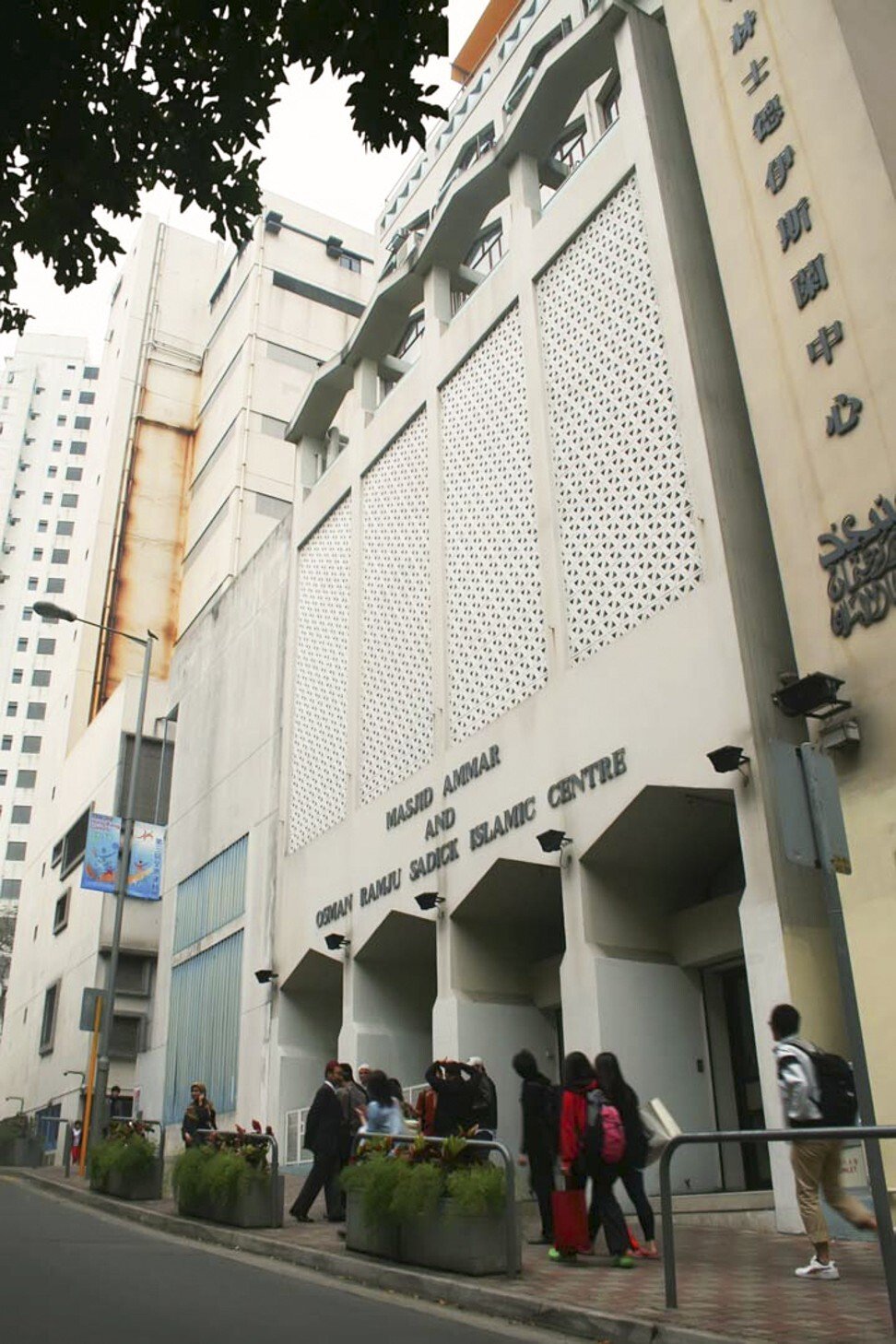
“It’s a very important thing to do as a Muslim,” he says. “You get very emotional when you see these [religious] sites with your own eyes. It’s very special to be there because it’s not easy … you need to be healthy, have the financial resources to travel there, and the time. You also hope to have a safe journey there and back.”
Yang is one of only two Chinese-speaking imams, or Islamic leaders, in Hong Kong, and recently published a book, Understanding Islam. It is both a Chinese-language primer on the faith, explaining its customs and practices, and a history of Muslims in the city dating back to the mid-19th century.

Muslims have lived in Hong Kong since the beginning of the British colonial era in 1841 when they arrived from India; most were troops, but there was a handful of traders.
The growing Muslim community built the Jamia Masjid, which opened in 1850 at 30 Shelley Street, Central. This mosque was demolished to make way for a bigger one that opened in 1915. Still standing, today it is overshadowed by the towering residential high-rises of in the upscale Mid-Levels neighbourhood.

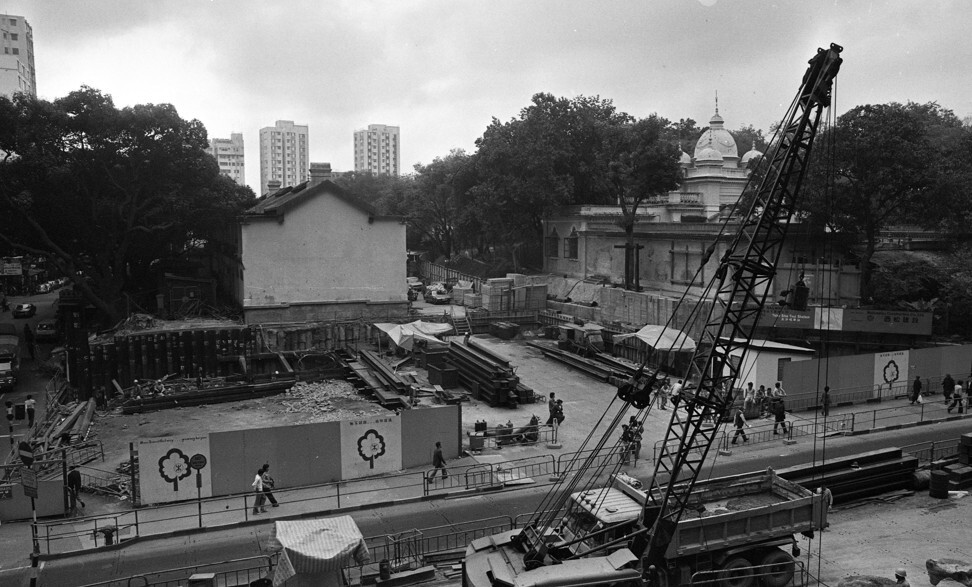
To accommodate the growing numbers of Muslims in Hong Kong, a second place of worship was built on the other side of Victoria Harbour in Nathan Road in 1896, called the Kowloon Mosque and Islamic Centre.
A third mosque, the Masjid Ammar and Osman Ramju Sadick Islamic Centre, where Yang is based, opened in 1981. It is named after Sadick, a Chinese Muslim and architect who funded and designed the building.
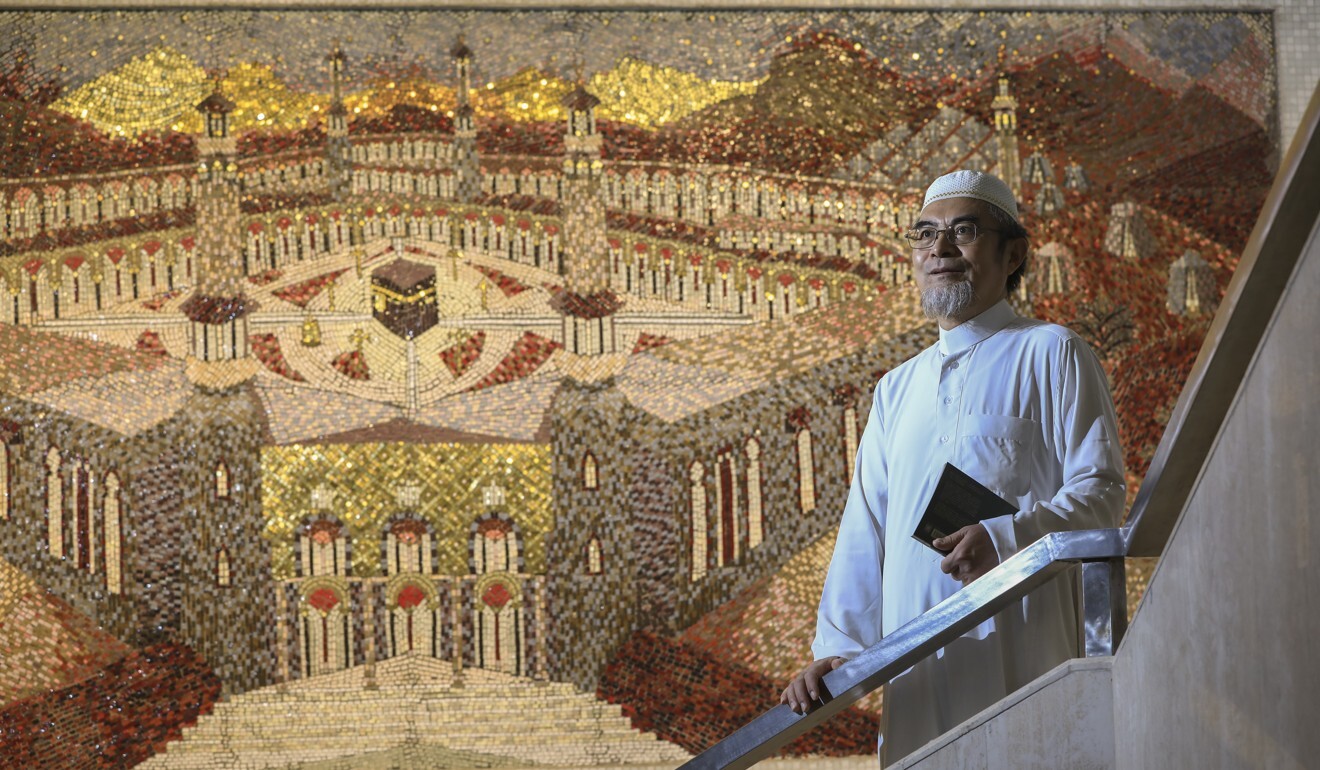
The number of Muslims in the city has continued to grow. When Yang arrived in Hong Kong in December 1993, there were about 60,000, he says. Today there are 300,000. Of these about 60 per cent are Indonesians, Yang says, the vast majority of them domestic helpers. There are 40,000 ethnic-Chinese Muslims, and 30,000 of Pakistani origin; the remainder come from the Middle East, Africa, and other parts of Asia.
Along with growth of the population, Yang has observed that the number of Islamic organisations and halal restaurants has grown since his arrival.
“We certify all the restaurants and even five-star hotels,” says Yang, who signs the certificates. “Before, Disneyland and Ocean Park didn’t serve halal food, but now they do, as does Cathay Pacific Catering Services.”

Originally from Taian, in Shandong province, eastern China, Yang yearned to follow in the footsteps of his father, who is also an imam and now 85 years old. Yang had to undergo extensive training to achieve his goal, studying for four years at the China Islamic Institute in Beijing from 1984 to 1988, and then at the International Islamic University in Islamabad, Pakistan, for four years.
Although many pious Muslim men have hopes of becoming imams, Yang says only a small number of clerical positions are available. “A lot of my classmates who couldn’t become imams became entrepreneurs, mostly doing trading in the Middle East, because they know Arabic and English,” he says.
In 1992, the Islamic Union of Hong Kong contacted the China Islamic Association in Beijing, asking for help finding a relatively young, Chinese-speaking imam in mainland China after being unable to find anyone qualified for the role in the city. After about a year of bureaucratic hurdles, Yang arrived in Hong Kong and got to grips with learning the local Cantonese dialect.

“When I first got here I found the city suffocating, with the tall buildings … you can’t even see where the sun is sometimes, which is important to know for prayer. When people give directions, they don’t say north, south, east, west, but left or right,” he says. “But I wasn’t here to have fun. I thought, if I can help Muslims in Hong Kong then I will do it. I don’t have many requirements.”
Yang began writing Understanding Islam two years ago because he was unable to find suitably comprehensive books on the subject in Chinese. “I want to help non-Muslims understand Islam and the Muslim way of life,” he says.
During his time in Hong Kong, Yang has been invited to universities to speak to students about his faith. “In 2001 [after the September 11 attacks on the United States] I was asked what is jihad, and had to explain killing non-Muslims is not in the Koran,” he says.
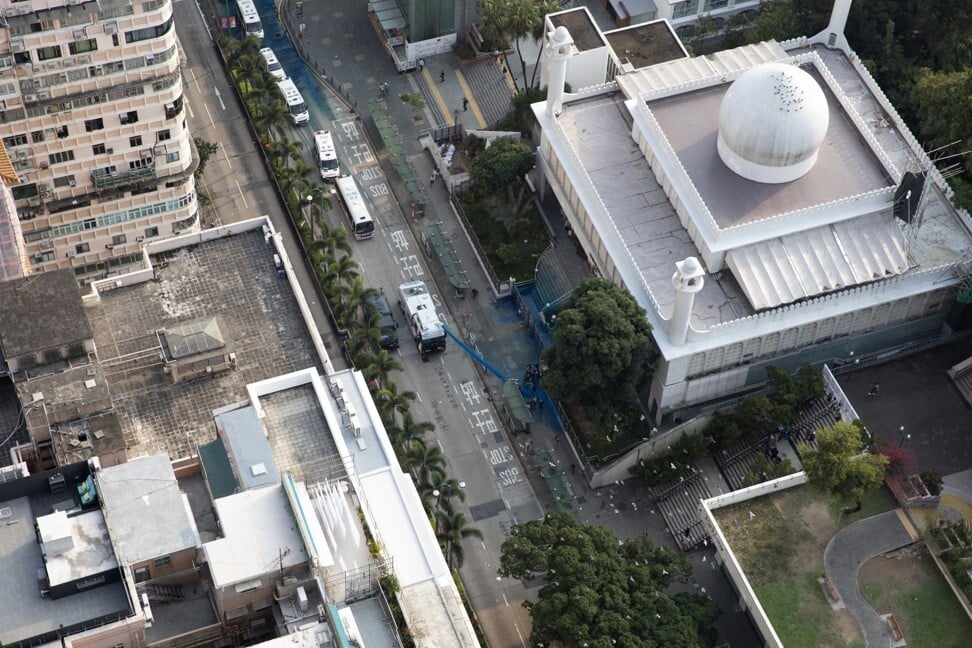
“I think the police purposely did this,” says Yang. “If you see the video, there was no one there [in front of the mosque]. Even worse, they didn’t spray clear water, but water dyed blue. They came over and apologised, and we accepted their apology.”
Yang says Islam is a comprehensive religion that, in contrast to other belief systems, touches all parts of a believer’s life.
When I first got here I found the city suffocating, with the tall buildings … you can’t even see where the sun is sometimes, which is important to know for prayer.
He says: “When you are Muslim you must eat halal food, and women wear headscarves. You pray five times a day. With Buddhists, they burn incense and pray, while Christians go to church, but afterwards they eat whatever they want, whereas Muslims don’t eat pork.”
Yang adds: “The path of Islam is that there is only one creator, one god, Allah. Mohammed is the messenger. There are no other prophets after him … Christians believe Jesus is the son of God, but we [Muslims] don’t believe God has a son.
“God does not have a wife. Jesus has a mother but no father. Mary did not marry, so how did she have Jesus? I ask Christians about this but they can’t give me an answer,” he says with a chuckle. “They also say Adam is the first son of God, but he has no mother or father. How can that be? They don’t have the answer for me.”
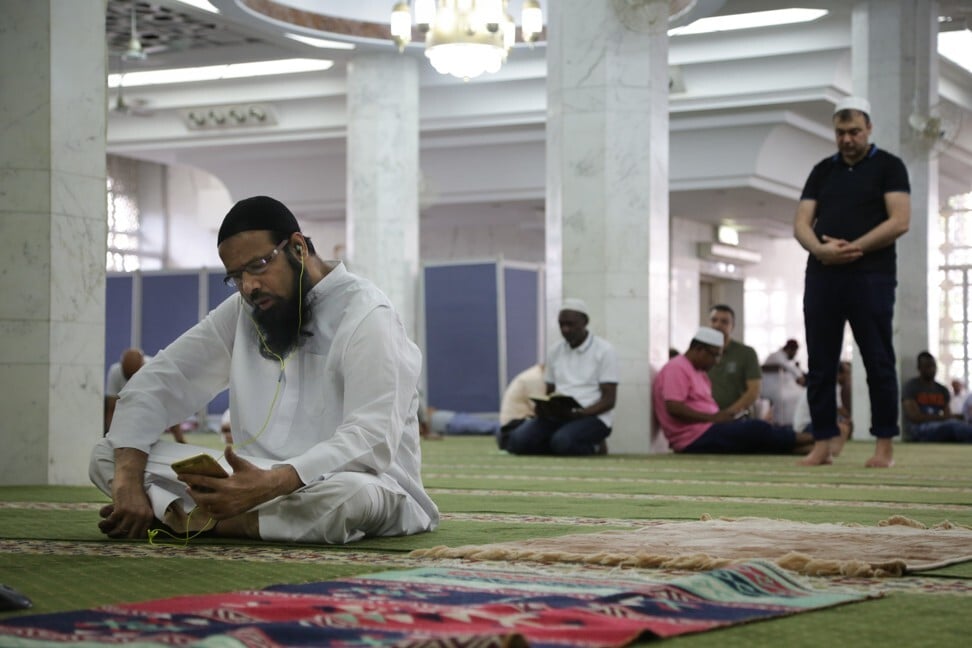
Personal hygiene is an important part of Islam, he says, and his book includes illustrations showing how believers clean their face, hands and feet before prayer.
“Water is very precious in the Middle East and so people there in the desert may not wash often, but they must do so for prayer otherwise their body is not clean to pray,” Yang says.
As he explains this, we reach 5pm, the time for prayers. A recording of a man singing is broadcast from speakers in the building, calling the faithful to prayer.
“Please excuse me, I need to go wash before I pray,” Yang says. And with that, he was off to practise the rituals of his faith.

